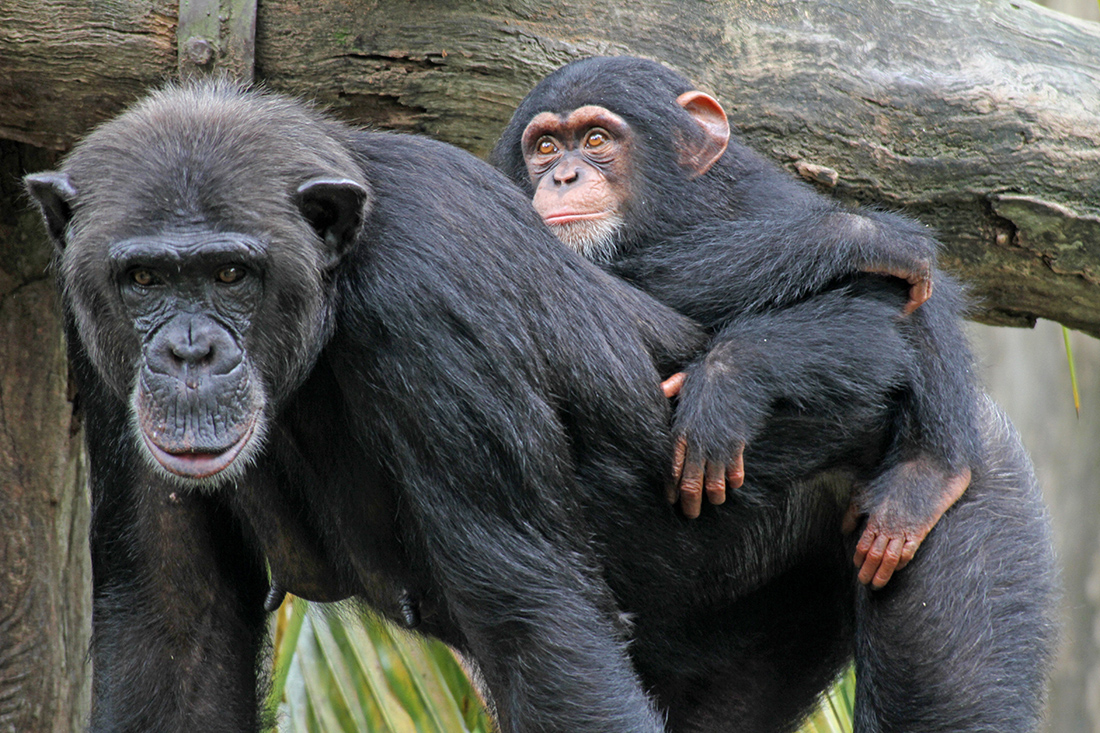Who Would Win a Human-vs.-Chimp Wrestling Match?

If you were to wrestle a chimpanzee in some kind of bizarre battle of the species, you'd be at a serious disadvantage.
Pound for pound, our closest cousins in the animal kingdom are about 1.35 times more powerful than humans, according to the first study to compare the underlying biology and mechanics of chimpanzee muscle to human muscle, along with reviewing previous research on the topic.
In terms of jumping, pushing, pulling and lifting, humans are indeed weaker than most primates, the group of mammals that includes apes and monkeys, the study authors noted. [Meet Your Muscles: 6 Remarkable Human Muscles]
But don't let that get you down. Human muscles have enabled us to walk and run great distances, providing us with the foraging and hunting abilities that ultimately made us human.
These differences in muscles likely emerged within the past 7 million years, when early human ancestors developed more slow-twitch muscle fibers (which are good for endurance) than fast-twitch muscles (which are good for speed and punch), according to Matthew O'Neill, an assistant professor at the University of Arizona College of Medicine in Phoenix. O'Neill led the research group that reported the findings, which were published today (June 26) in the journal Proceedings of the National Academy of Sciences.
"Previous studies have shown that slow fibers are more fatigue resistant and less costly to contract than fast fibers," O'Neill said. "We can … do things like run marathons, unlike chimpanzees."
This greater number of slow-twitch fibers may have evolved because it gave early humans the advantage of being able to travel long distances and forage, and allowed them to rely less on powerful movements for survival and fitness, O'Neill said.
Sign up for the Live Science daily newsletter now
Get the world’s most fascinating discoveries delivered straight to your inbox.
For years, scientists have suspected that chimpanzees are more powerful than humans, but that suspicion was based largely on anecdotal evidence. Adult chimps are generally smaller than adult humans; on average, the apes weigh about 100 lbs. (45 kilograms). Therefore, it has been difficult to accurately compare strength between the two primates. [10 Things That Make Humans Special]
The notion that chimpanzees and other apes have superhuman strength dates back first to tall tales from European explorers in sub-Saharan Africa in the early 19th century and then to research in the 1920s by biologist John Bauman, who studied chimps in zoos. In a series of studies later revealed to have poor methodology, Bauman found that chimps could pull weights five times heavier than the beefiest college football players could.
One particular chimpanzee, named Suzette, supposedly pulled 1,260 lbs.(572 kg) in a fit of rage, which was nearly 10 times her body weight, although no other study has recorded anything close to that show of strength.
The "five times stronger" figure stuck for decades until more modern studies in the 1960s refined the estimation to about two times stronger. O'Neill's group reviewed even more recent, laboratory-controlled studies on chimpanzee mass-specific muscle performance and found that, on average, the animals outperformed humans by a factor of approximately 1.5 in tasks involving pulling and jumping.
Then, the group compared the skeletal muscles under a microscope.
"One of the advantages of our approach is that we avoid all the complexities involved in trying to elicit maximal performance from a chimpanzee of unknown motivation or interest, and instead gets right to the measurement of the muscle tissue," O'Neill told Live Science.
The researchers found that the so-called contractile properties of human and chimpanzee skeletal muscle fibers — that is, how muscle fibers pull two joints together to enable the body to lift or move — are similar. [6 Strange Things the Government Knows About Your Body]
However, human skeletal muscles differ in fiber length and protein composition, the study found. Chimp muscles contain a balanced mixed of three variants of a protein called MHC: I, IIa and IId. But human muscles are dominated by the MHC I variant. This variant enables slower twitching, or contracting, which is important for endurance and energy conservation.
The researchers' computer simulations revealed that these differences in muscle characteristics increase the maximum dynamic force and power-producing capacity of chimpanzees by a factor of 1.35 compared to humans. The price of that power, though, is that chimps and other apes tire more easily and cannot walk great distances to find food — or, for that matter, to find new lands and make new discoveries.
The finding is independent of body size and instead concerns the physical property of individual muscle fibers, O'Neill said. Both humans and chimps can gain strength through exercise and the creation of more muscle fibers.
Rather, pound for pound, chimps have the advantage in a fight. So you'd better stick to long-distance running.
Follow Christopher Wanjek @wanjek for daily tweets on health and science with a humorous edge. Wanjek is the author of "Food at Work" and "Bad Medicine." His column, Bad Medicine, appears regularly on Live Science.

Christopher Wanjek is a Live Science contributor and a health and science writer. He is the author of three science books: Spacefarers (2020), Food at Work (2005) and Bad Medicine (2003). His "Food at Work" book and project, concerning workers' health, safety and productivity, was commissioned by the U.N.'s International Labor Organization. For Live Science, Christopher covers public health, nutrition and biology, and he has written extensively for The Washington Post and Sky & Telescope among others, as well as for the NASA Goddard Space Flight Center, where he was a senior writer. Christopher holds a Master of Health degree from Harvard School of Public Health and a degree in journalism from Temple University.
What are mRNA vaccines, and how do they work?
Deadly motor-neuron disease treated in the womb in world 1st









